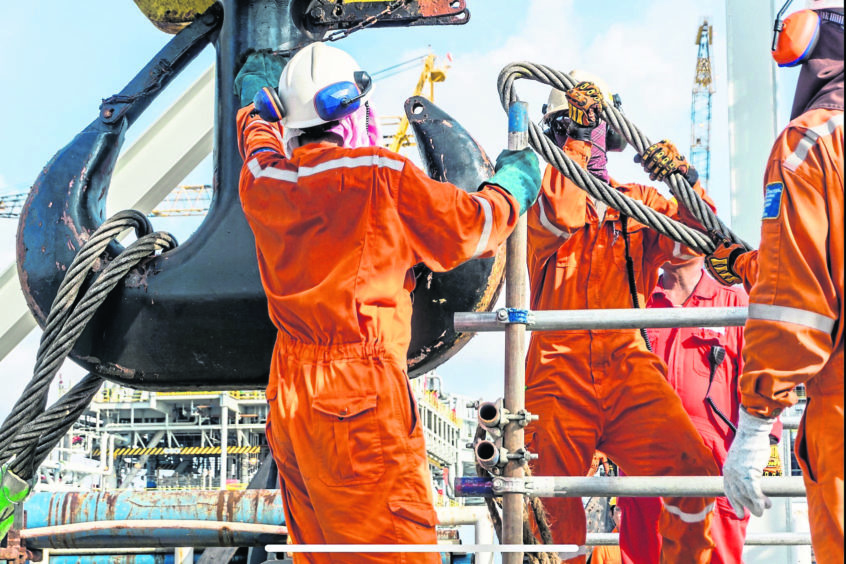
In the UK and particularly in Scotland the oil and gas industry remains a major employer. It is also one of the very few providers of high value, high skilled jobs we have left and still offers a wide range of opportunities.
It’s just as well because efforts here in Scotland to build an energy transition movement and creating a viable, large-scale renewables or net-zero manufacturing supply chain have so far – with one or two exceptions – failed and the number of jobs forecast 10 years or so ago have simply not materialised.
It also now seems likely that the chances of achieving any meaningful improvement in that situation are low. A combination of the huge political uncertainty surrounding relations with the EU and the traditional UK issues of short termism, risk averseness and the lack of availability of investment capital don’t help.
There is also little doubt that we continue to suffer from not having a national champion in the same way Norway has Equinor, Denmark has Orsted, France has EDF, Sweden has Vattenfall, and so on. All of these and others are either wholly or majority owned by their respective governments and are used by them to achieve their industrial and economic objectives. In some countries companies also tend to be naturally inclined towards industrial nationalism even though they are not state owned. I have often thought that every US oil and gas operator seemed to act as an ambassador for American industry.
These national champions play a vital role in encouraging and enabling the development of their indigenous supply chains through collaboration, involvement in projects and, sometimes, direct funding. And – to be blunt – our lack of state-owned companies is an ideological issue which has not played at all well for the UK.
As neither Scotland nor the UK have a national champion – and for those who might think it, BP most certainly isn’t one and neither is SSE – then we have even more of a problem than the effect of Brexit and an over-cautious financial sector.
If there is a genuine intention to build that supply chain — and I have to admit I sometimes wonder whether that intention does actually exist — then we need to build a buffer to provide sufficient time to allow that supply chain to get moving.
This means we need to maintain what we have in oil and gas and, where possible, to expand it but without adding to the problems of climate change. For example, most natural gas needs to be reformed to hydrogen and the carbon dioxide produced, stored or – preferably – converted to useful chemical products.
Anniken Hauglie, who runs, the Norwegian Oil and Gas Association, Norway’s version of Oil and Gas UK, put it rather well in a recent article talking about the need for a Covid-related “crisis package” for the oil and gas industry when she said there could be “no change without the oil industry”.
For Norway this is absolutely correct because Equinor is now a profoundly serious player in the energy transition business.
Not only have they invested heavily in the development of floating wind technology – with ironically their first demonstrator project being offshore Aberdeen – but are now developing plans not just for more offshore wind but hydrogen projects as well.
They are leading the H2H Saltend project in England on the large-scale production of hydrogen from natural gas coupled with a carbon capture and storage project using redundant offshore gas reservoirs.
Equinor is also participating in converting Vattenfall’s Magnum gas-fired power plant in the Netherlands to run on hydrogen and they were a partner in the first phase of the H-vision project, a large-scale production and utilisation of blue hydrogen that will allow local industry in Rotterdam to substantially reduce its CO2 emissions well before 2030.
With its partner SSE Renewables, Equinor is also building the largest offshore wind farm in the world, Dogger Bank offshore the English East coast.
However, in late 2019 the UK Oil and Gas Authority (OGA) issued a report regarding the first phase of what they called the “UK Continental Shelf Energy Integration project”. The objective is to determine how oil and gas infrastructure can be used for carbon capture and storage (CCS), hydrogen production and wind. Importantly, it also looks at how the operators and the supply chain can work together to turn some of those ideas into reality.
Equinor has demonstrated that the oil and gas industry and all the expertise that goes with it can be mobilised to help enable the first stage of the energy transition. The question for Scotland and the UK is how we can achieve the same thing here and benefit industrially and economically without an Equinor. For me it is a moot question given the obstacles we already face and one which the recent problems at BiFab illustrate all too clearly.
Dick Winchester is a member of the Scottish Government’s energy advisory board
Recommended for you
